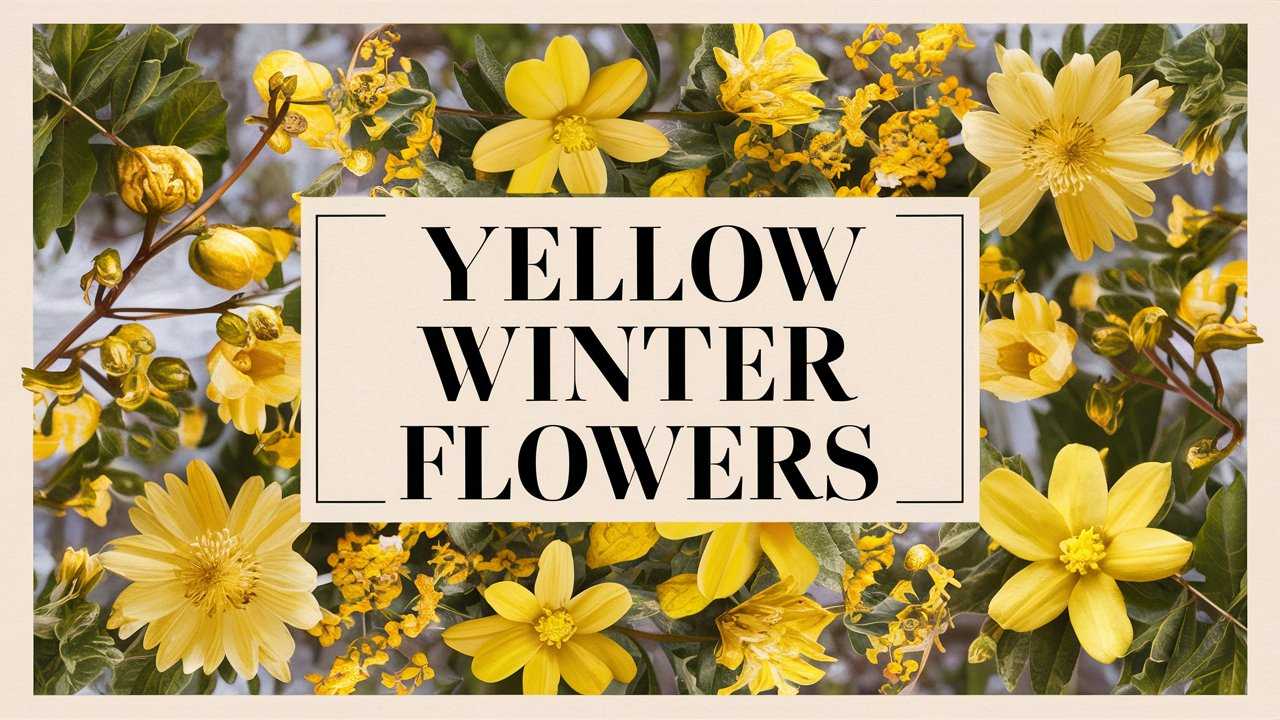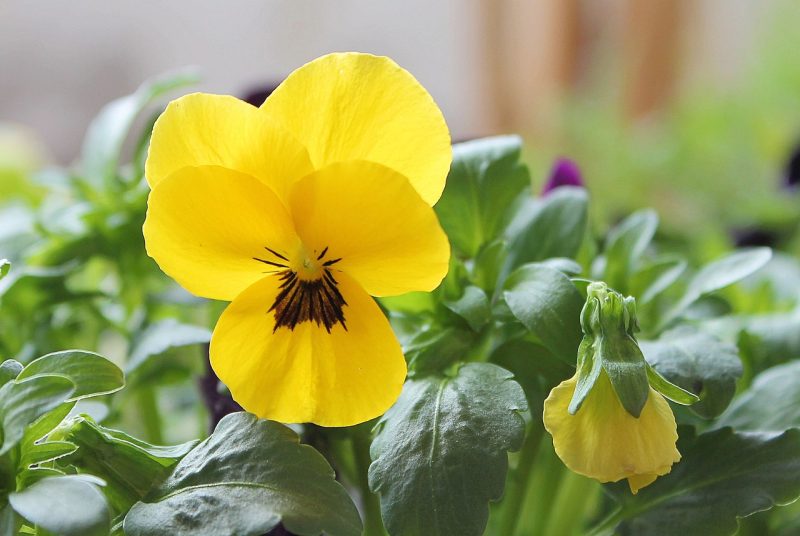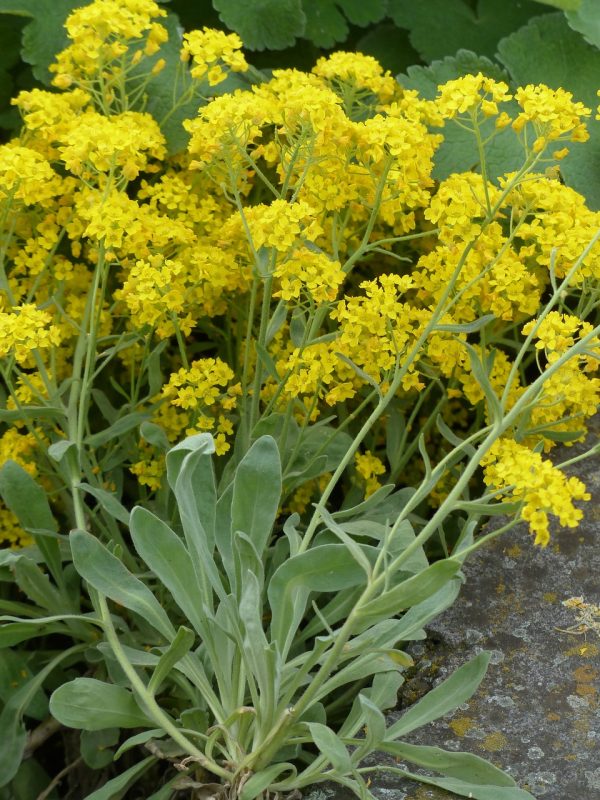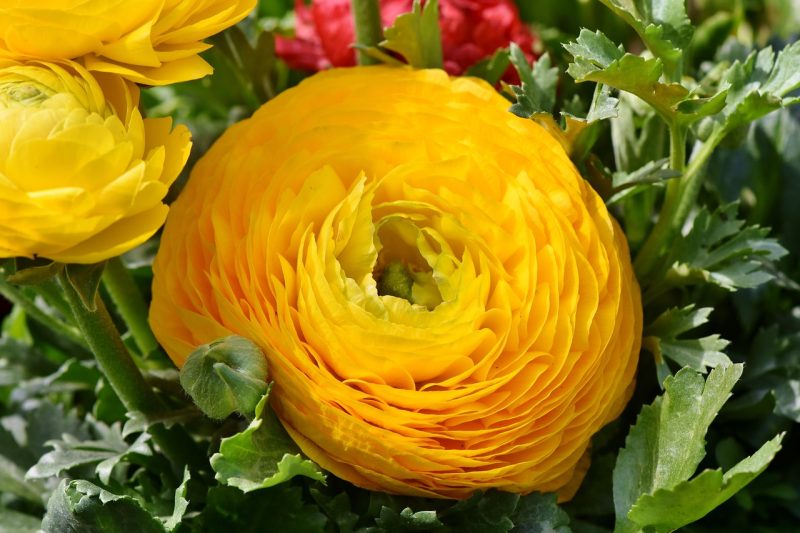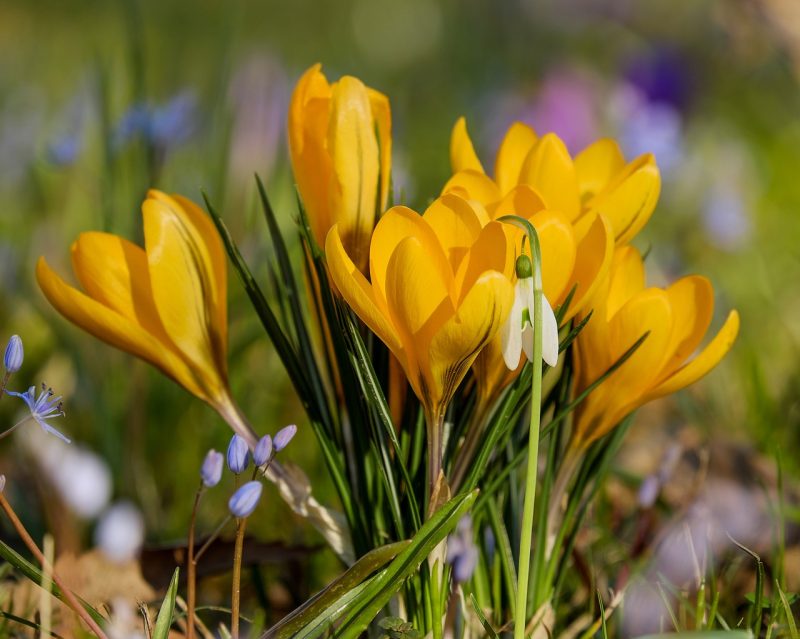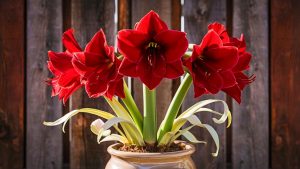While winter may seem like a season dominated by cold and gloom, it also holds a hidden treasure of botanical beauty. Among the whispers of snow and the grey backdrop of dormant gardens, yellow winter flowers rise to brighten the landscape. This post explores some of the most captivating yellow blooms that defy winter’s chill, each bringing a touch of warmth and cheer during the colder months.
Winter Aconite
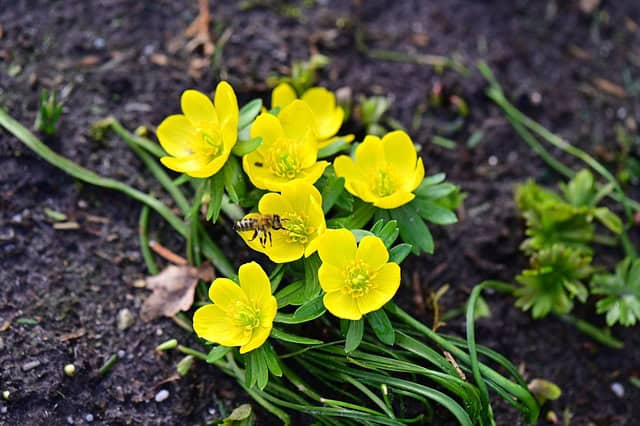
Winter Aconite (Eranthis hyemalis) is an early bloomer that often heralds the arrival of spring, even as snowflakes may still fall. This perennial herbaceous plant is native to southern Europe but has become a beloved addition to many gardens and woodlands around the world.
One of the most striking features of the Winter Aconite is its bright yellow, cup-shaped flowers, which typically emerge during February or March, often pushing through the remaining snow. Each flower consists of numerous delicate petals, creating a vivid splash of color against the monochrome winter landscape.
Besides its aesthetic appeal, Winter Aconite is also a valuable plant for pollinators. Its flowers are a crucial food source for early bees, who come out of hibernation in search of nectar. The plant thrives in well-drained soil and prefers partly shaded areas, making it an excellent candidate for planting among deciduous trees, where it can take advantage of the sunlight filtering through before the leaves fully emerge.
Witch Hazel
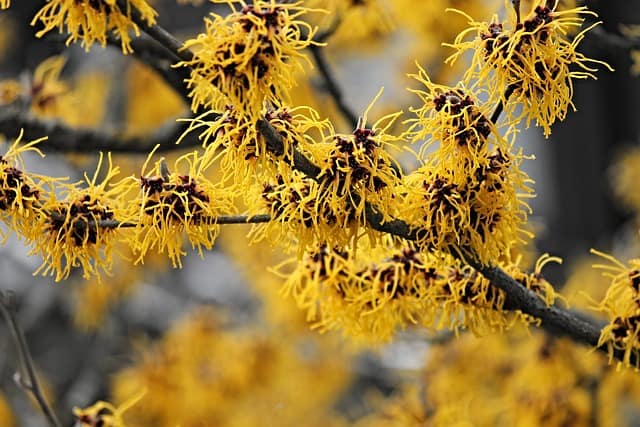
Witch Hazel (Hamamelis virginiana), with its unique and fragrant flowers, offers a captivating spectacle during the bleak winter months. Native to North America, this flowering shrub is well-loved for its tolerance of cold temperatures and ability to thrive in various soil types, making it a versatile addition to gardens.
What sets Witch Hazel apart is its unusual bloom timing. It flowers between January and March, producing stunning yellow, ribbon-like petals that appear to dance in the winter breeze. The flowers have a subtle, sweet fragrance that fills the air, attracting early insects and captivating all who pass by.
In addition to its ornamental value, Witch Hazel leaves and bark have long been used in traditional medicine for their astringent and soothing properties. The distillate from the plant is commonly found in skin care products due to its ability to reduce inflammation and promote healing. Thus, planting Witch Hazel not only enhances your garden’s beauty during winter but can also contribute to holistic well-being.
Primrose
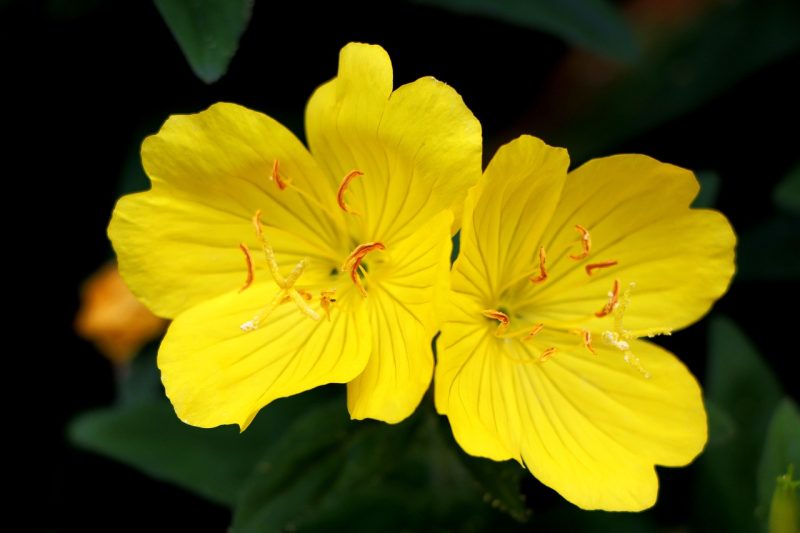
Although commonly associated with spring, the winter-flowering Primrose (Primula spp.) offers delightful surprises during the colder months as well. Certain varieties, such as the Primula veris or the cowslip, can start blooming as early as December and continue to flourish well into the winter season.
These perennial plants are prized for their enchanting yellow flowers, which often feature a striking central eye of contrasting color. Primroses thrive best in moist, well-drained soil and can tolerate partial to full shade, making them a practical choice for various garden conditions.
Primrose is also celebrated for its role in folklore and traditional medicines. Historically, the flowers were associated with lovers and were thought to symbolize happiness and warmth. Beyond their cultural significance, these flowers are important to various pollinators, notably bees, providing a crucial early source of nectar and pollen.
With their ability to bloom through the winter’s chill, Primroses serve not only as a colorful accent to winter gardens but also as a reminder of nature’s resilience and the hope of the warmer days to come.
Mahonia
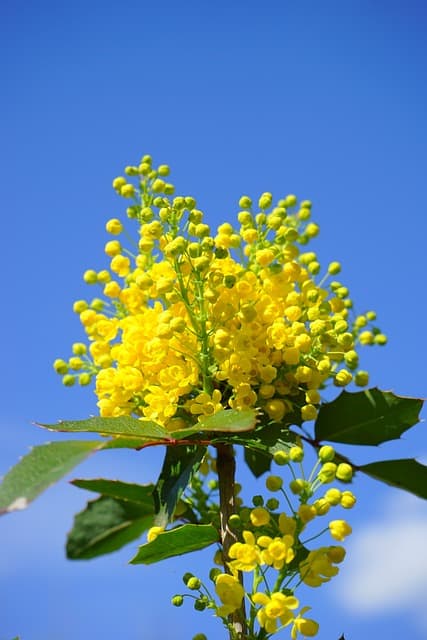
Mahonia, commonly known as Oregon grape, is a striking evergreen shrub that adds considerable beauty during the winter months. The most notable species, Mahonia aquifolium, boasts leathery, holly-like leaves that remain vibrant throughout the year. However, it’s the clusters of small, fragrant yellow flowers that emerge in late winter that truly capture attention.
These flowers bloom in dense clusters, typically from January to March, providing a cheerful contrast against the dark green foliage. The blossoms not only attract pollinators like bees but also evolve into small blue-black berries, which some birds enjoy during the winter. Mahonia is hardy and adaptable, thriving in various soil types and tolerating shade, making it a fantastic choice for naturalized areas or woodland gardens.
Beyond its visual appeal, Mahonia has historical significance in herbal medicine. Various parts of the plant have been used traditionally to treat ailments due to their antibacterial and anti-inflammatory properties. Cultivating Mahonia not only fills your garden with color but also connects you to its rich history of use in natural remedies.
Winter Jasmine
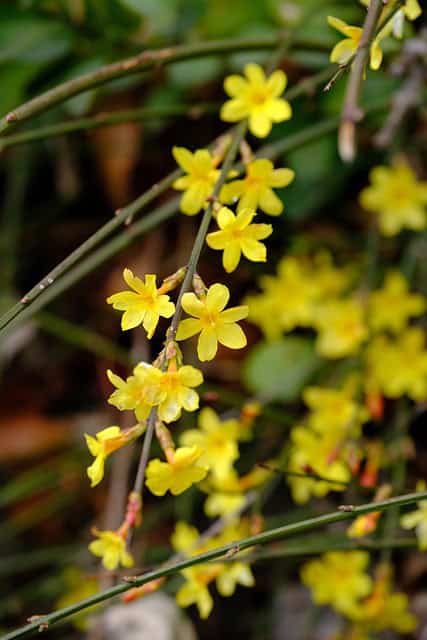
Winter Jasmine (Jasminum nudiflorum) stands out as a favorite for those eager to indulge in bright yellow blooms even in the dead of winter. Unlike many flowering plants, Winter Jasmine thrives with little care, often successfully colonizing neglected spaces, climbing, and spreading across trellises, walls, or the ground.
This deciduous shrub is notable for its delicate, star-shaped yellow flowers, which blossom in abundance from December through March. The blooms appear before the leaves, offering a vivid sight when most other plants remain dormant. The sweetly fragrant flowers are particularly favored by pollinators like bees, providing essential resources during the winter months when food is scarce.
Winter Jasmine is remarkably versatile and can adapt to various growing conditions, thriving in both full sun and partial shade. Its ability to flourish in poorer soils makes it an ideal candidate for low-maintenance gardens. Planting Winter Jasmine not only enhances your winter landscape with its bright blooms, but it also supports the critical role of pollinators during the colder season.
Pansies
While often associated with spring gardens, pansies (Viola tricolor var. hortensis) can surprise gardeners with their ability to flourish through the winter, especially in milder climates. Known for their vibrant and cheerful flowers, pansies come in a variety of colors, including stunning shades of yellow that can bring warmth and joy to any dreary winter afternoon.
These hardy annuals are typically planted in the fall or late winter, where they can establish themselves before truly cold weather sets in. Their unique ability to withstand frost allows them to bloom as early as January or February, often featuring striking yellow blooms with dark purple or black centers that create a dramatic contrast.
Pansies are also versatile with their planting options; they can be used in garden beds, containers, and even window boxes, effectively bringing a splash of color and charm wherever they’re placed. Additionally, while they may seem delicate, pansies are surprisingly resilient, often continuing to bloom throughout winter if cared for properly.
Beyond their beauty, pansies are edible and can be used to add color to salads and garnishes. They are also favored in herbal remedies for their soothing properties. By including pansies in your winter garden, you not only enjoy their lovely appearance but also bring a delightful taste and occasional health benefits into your winter cooking.
Daffodils

Daffodils (Narcissus spp.) are synonymous with spring and often evoke memories of warm, sunny days. However, certain early-blooming varieties can make their presence known as winter edges into spring, making them a delightful addition to winter gardens. Daffodils typically begin to sprout in late winter, their bright yellow trumpet-shaped flowers emerging from the ground as early as February in warmer climates.
These resilient bulbs prefer well-drained soil and sunny locations, allowing them to thrive in a variety of settings, from borders to rock gardens. Once established, they are remarkably low-maintenance, returning each year with little care required beyond the initial planting. Daffodils are often planted in groups to create vibrant carpets of yellow, which can be especially striking against a backdrop of snow or frost.
Daffodils are also celebrated for their natural pest resistance. The bulbs contain compounds that deter animals, making them unattractive to deer and rodents. Beyond being hardy and beautiful, daffodils hold significant cultural symbolism; in many cultures, they represent renewal and rebirth, making them perfect for signaling the gradual transition from winter to spring.
Gold Medal or Goldentuft (Alyssum saxatile)
Gold Medal, also known as Goldentuft, is a perennial herb known for its clusters of tiny, golden-yellow flowers that bloom in late winter to early spring. This low-growing plant thrives well in rocky or well-drained soil and is an excellent choice for borders, rock gardens, or cascading down walls. With its sweet fragrance and ability to attract pollinators, Gold Medal can enhance your garden’s allure while providing essential early food for bees.
Yellow Buttercup (Ranunculus spp.)
Certain species of buttercups, especially the creeping buttercup (Ranunculus repens), can produce delightful yellow flowers during the late winter months. As a perennial, these cheerful blossoms can spread quickly across the landscape, offering a burst of sunshine. With their glossy petals, buttercups create a striking display, making them a joyful addition to both wildflower gardens and formal settings alike.
Yellow Crocus
Crocuses are among the earliest flowers to bloom in spring, but some varieties can also appear during late winter, especially if the weather is mild. The vibrant yellow crocus (Crocus vernus or Crocus chrysanthus) is particularly popular as it ushers in the season boldly with its cup-shaped blooms. These hardy little flowers thrive in well-draining soil and full sun, growing in clusters to create an exuberant display.
Forsythia
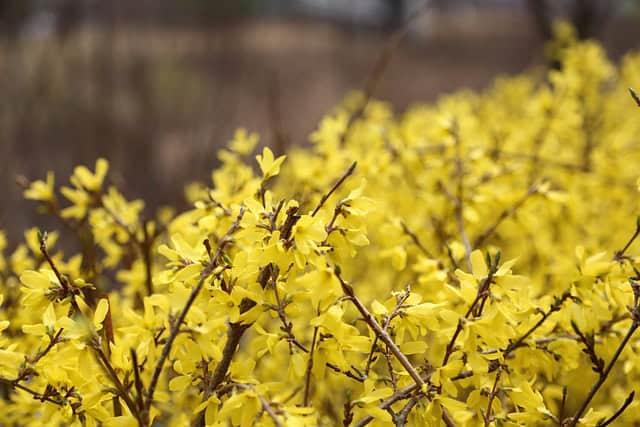
Though more of a shrub than a flower, Forsythia is renowned for its stunning, bright yellow flowers that herald the coming of spring. Forsythia buds swell through winter, bursting open in late winter to early spring with vibrant yellow blooms that cover the branches before the leaves appear. This hardy shrub not only adds color but also provides shelter for birds and pollinators.
Conclusion
Incorporating yellow winter flowers in your garden is a fantastic way to enjoy the transitional months and prepare for the impending spring, all while brightening your outdoor space. Celebrate the joy these flowers bring, and let their cheerful colors serve as a reminder that beauty can thrive even in the coldest seasons.


